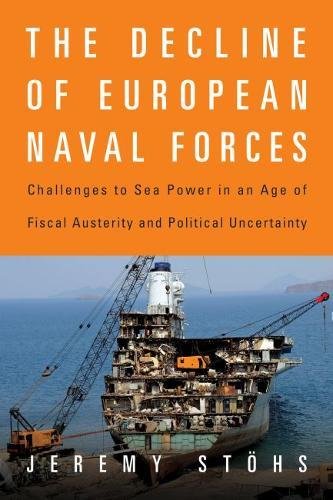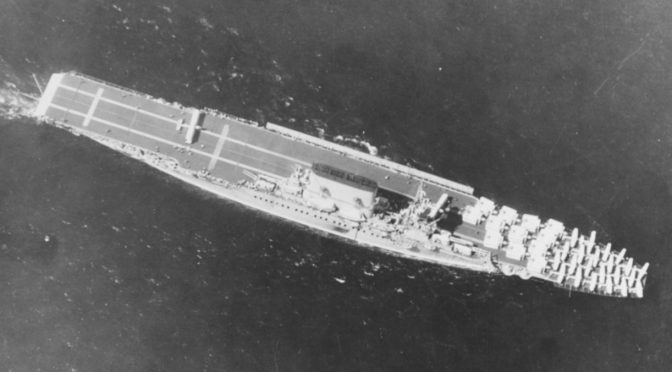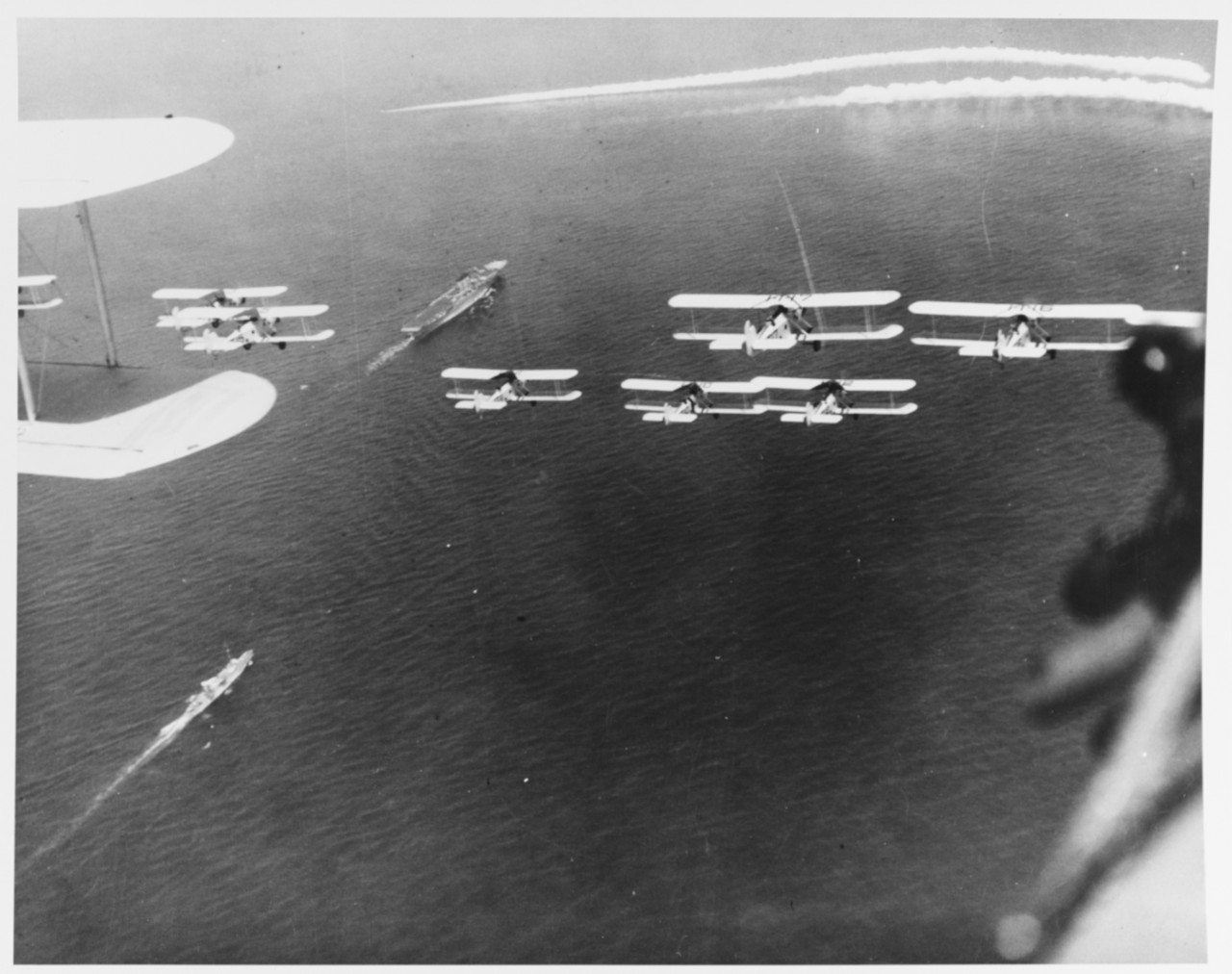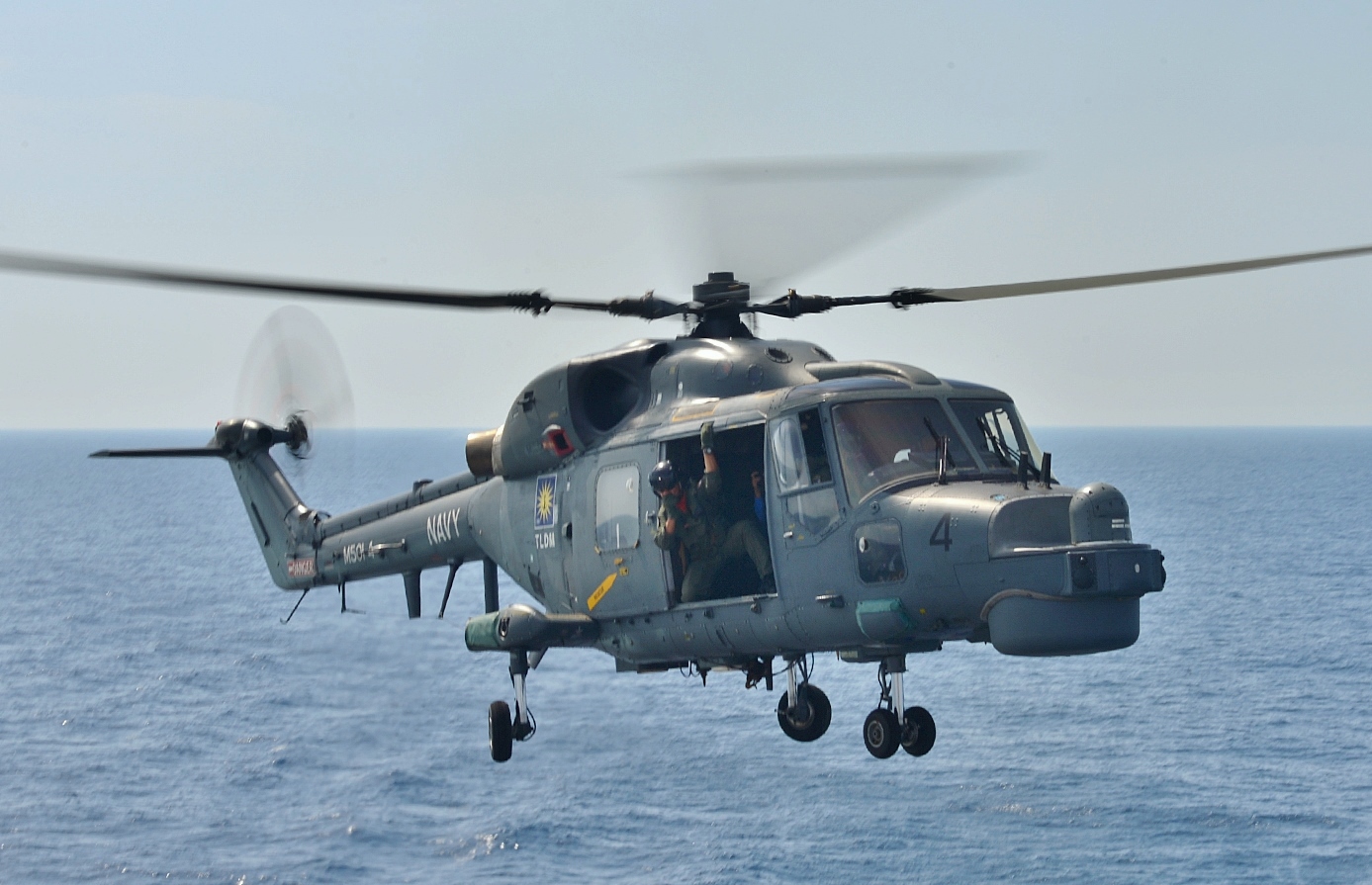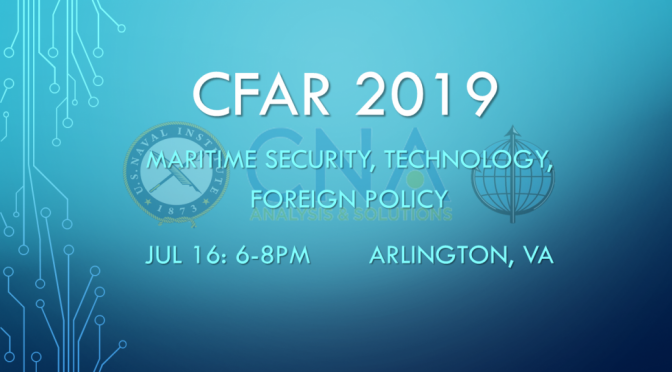By Roger Hilton
The intensifying competition between the United States, Russia, and China for control of strategic spaces has brought with it a slew of challenges and a lowered threshold for potential confrontation. Consequently this new security dynamic has forced national policymakers to reconsider the importance of the maritime domain when it comes to global statecraft. Consequently, this new security dynamic has forced national policy makers to reconsider the importance of the maritime domain when it comes to global statecraft. On quick observation the situation does not inspire much confidence. Years of neglected force structure investment by European nations coupled with shifting American presence to Asia suggest a distressing situation. Consequently, based on these factors it is only natural to ponder if Europe’s naval forces are doomed to impotency for the foreseeable future, or if reform if possible.
Here to help us navigate these questions is Jeremy Stöhs, an Austrian-American defense analyst at the Institute for Security Policy at Kiel University and its adjunct Center for Strategy and Security. In addition, he is also a fellow at the Austrian Center for Intelligence, Propaganda, and Security Studies. His current research and teaching focuses on transatlantic relations, maritime security, and European naval power. He has written various articles and chapters on the matter and is the author of the recent book, The Decline of European Naval Forces, Challenges to Sea Power in an Age of Fiscal Austerity and Political Uncertainty.
The decline of European naval power can provide insight into the evolution of Europe’s naval forces since the end of the Cold War. To illuminate the drastic changes many European navies have undergone in the past 25 years, we turn to Jeremy who has analyzed the defense policies and naval strategies of 11 European states, as well as the evolution in deployments and capabilities of their respective forces.
JS: Thank you for having me Roger, it’s always a pleasure talking to you.
RH: Before we dive in, it might be helpful if we structure the conversation. We will cover three distinct periods as they relate to the decline of European naval forces. The first period reaches from 1990-2001, and encompasses the post-Cold War peace dividend. The second period, from 2001-2014, covers land wars in the age of global terrorism after 9/11. Period three, 2014 to the present, begins with the annexation of Crimea.
In your book you describe both the concept of sea power and naval power, can you explain each concept and explain what distinguishes them?
JS: Thank you very much for the question. There is, as you infer, significant semantic awkwardness regarding these terms and their numerous definitions for seapower, for maritime power, for naval power. I like to paraphrase retired British Admiral Chris Parry who argues that sea power is the combined investments of various resources of the state or enterprises in the pursuit of favorable outcomes at sea. I happen to focus on states despite non-state actors gaining power in the world.
But it’s not only about investments or what Geoffrey Till calls the inputs. Sea power is also about the outputs, or in other words, what capacity states have to influence human behavior by what they do at sea. The state is one basic unit for the measurement of power distribution so sea power broadly speaking would include all investment of the state, such as cultural, commercial, military in the maritime domain. Naval power is but one part of sea power, it’s the military investment.
RH: Can you provide some contemporary examples of each?
JS: The concepts are linked, so I would not say there is one example for one or the other. In order to have sea power in my opinion, you need to have a degree of naval power. Some states may have some significant maritime commercial interests but relatively little means for similarly large investments in naval power. But I refer again to Geoffrey Till who refers to that as the virtuous circle, so one investment in one area is mutually beneficial, and a decline in one area can affect decline in another. I believe this is something we have seen in the past, it is important to remember that most every state – or rather every state – has some interest in the sea, and they enjoy different forms of agency at sea. Even landlocked countries like my home Austria has a part to play within the global trade regime and therefore also has stakes at sea.
Sea power and naval power are linked, and it’s a different concept than how it was understood maybe 200 years ago, but today they are inextricably linked.
RH: We have the post-Cold War peace dividend, from 1990-2001. You describe in detail how this period started the initial erosion of naval capabilities and strategies. With the end of the Cold War, yourself like many experts declared that the existential threat of the USSR disappeared and by extension led to the abandonment of traditional naval doctrine. As this was a period of transition from sea control, sea denial, and territorial defense operations to power projection and operations in the littorals. How would you describe this transition, and was this shifting of capabilities for nations smooth or for others was it a regrettable experience?
JS: Well now we have the benefit of hindsight and hindsight is always 20/20. But generally speaking you are correct, although I would say that this process was much more nuanced depending on the respective state and more nuanced than it might seem today.
Two broad trends that are discernable during this period of time are states either adhering to traditional strategies of territorial defense, or seeking greater power projection in all its forms, not only military but also in terms of economics and so on. Those are the two opposing trends. But as always I think it’s important to keep in mind it was not black and white but a continuum of change. States might have had a government that emphasized one area over others, and because sea power is an enduring element many of the developments were gradual. So I try to refrain from revolutionary language, I think it was very incremental. Ships cannot be built overnight, naval and maritime proficiencies cannot be gained overnight, and the capabilities in existence in the 1990s were very much the same as the 1980s. It was the same or similar platforms, systems, and people, largely working in unfamiliar waters maybe, and often in unfamiliar ways.
It’s important to note that some navies in some states welcomed these new missions whereas others were reluctant to join in the post-Cold War euphoria. And this is of course related to geostrategic freedom of action. You look at a state like Norway with its proximity to a historical antagonistic, Russia, and other states with very limited financial means it’s difficult to change its naval policy. Therefore I don’t think there is a clear answer to your question.
RH: Against the backdrop of this maritime landscape that deemphasizes traditional doctrine, how are navies in this time justifying their existence and budgets?
JS: A difficult question to generalize and, again, it depends a lot on each Navy, and there should be much more research of each Navy in terms of how the defense policies have changed. But broadly speaking already during the 1980s in the period of easing tensions between East and West, the German reunification, the maintenance of previous spending levels on defense was not possible. You see this already in British defense studies such as the Options for Change white paper of 1990 that clearly describes how previous defense spending was no longer feasible. So how do they actually justify their existence?
It depends. You have the Scandinavian states, with the exception of Denmark, justifying their existence through a continued threat to their territory, with Russia still being the most powerful military power on the continent. The need to protect their Exclusive Economic Zones was also a core argument, and it’s important to remember that provisions of UNCLOS came into force in 1994, elevating the importance of the EEZs even more so.
In the south you have Greece and Turkey which lived through a period of increased tension during the 1990s. This necessitated hikes in defense spending. And for the rest of Europe, many countries placed great emphasis on projecting power, interventions, peace support operations and such. These took navies outside of the NATO’s traditional areas of operation, ‘out-of-area,’ and naval forces were uniquely suited in this role because of their three basic functions, including: the military, the diplomatic, and the constabulary function.
In this period of fiscal austerity, defense planners used every opportunity they had, but it differed from country to country.
RH: You make the observation that green and brown-water navies evolved into blue water navies. Was this a matter of survival, or was this repurposing utility?
JS: There are only a couple of examples where that actually occurred and that has something to do with this aforementioned trend toward power projection. During the Cold War, European navies were assigned specific duties within their areas of responsibility, such as anti-submarine warfare, mine warfare, escort duties, amphibious assault, and so they were quite limited by the bipolar world order.
Once these restrictions ended then states that enjoyed strategic freedom of action sought to use naval forces to project power. And an interesting point, those examples that stick out are the Germany Navy or the Danish Navy, to the less extent the Belgian and Spanish navies, they really saw power projection in different forms. But these navies, mainly the German and the Danish navies, were mainly green water navies, operating close to shore occasionally conducting escort duties, but now they would become blue water navies operating far from home. Now they would go into other littorals at great distances, so they would still act as littoral navies, but at a great distance from home. So that’s an interesting aspect of this whole blue water, green/brown debate.
And of course the repurposing had some utility for those navies. They were able to contribute to increasing number of peacekeeping operations that were emerging in the 1990s, including crisis management which was one of NATO’s main roles, military interventions of course in the Balkans for example, but also further afield. We have numerous operations, including Desert Storm, Yugoslavia, Operation Desert Fox in the late 90s, the intervention in Sierra Leone, also low-key humanitarian assistance and disaster relief efforts after natural catastrophes and so on.
RH: Despite it being a time of economic prosperity and peace, you reference large-scale investments and procurement projects that took place during this period. Can you situate some of the naval hardware being bought and used at the time?
JS: I provide a lot of examples in my book on naval procurement and force structure, and to a certain extent the platforms and their advantages and disadvantages. It’s important to note that European defense industry was of course a powerful actor. It had influence on how naval forces were built and what they looked like, and critical technologies and jobs of course were still main concerns.
It’s important to remember as I mentioned before, navies can’t be built overnight. So, during the 1990s, they were designed for the Cold War, for high intensity warfighting. If you look at the Italian Navy, the German Navy, they were designed for warfighting, a lot of anti-submarine warfare, escort duties, and mine warfare. Now, all of the sudden, you have this need for expeditionary operations and what you need for that, well you need multi-purpose surface combatants, landing platform docks, amphibious assault ships, helicopter carriers and such. So, on one hand, you see this trend that you need larger platforms for low-intensity operations, and at the same time you have all those procurement projects that were developed and designed in the 1980s. There was a divergence between strategic necessities and the security environment for what you need for that and the procurement plans that are already in the pipeline. In the 1990s you see European countries developing air defense capabilities and air defense destroyers and frigates, and those were capable ships that were commissioned at a time where threats of anti-ship missiles in the littorals are not all too great, and where European countries are operating ships with relative impunity.
But of course this had the advantage of supporting important industries and just goes to show that you have to be very prudent about your decision-making and strategic forecasting.
RH: Is there anything else you’d like to add that we should know or that we’ve overlooked?
JS: With respect to downscaling in this period of time, you have fiscal austerity, a peace dividend, so especially maintenance-intensive and manpower-intensive platforms are decommissioned. But it can be considered a period of relative plenty, especially with regard to the threat scenarios at the time. You still have highly capable platforms coming online, you have highly-proficient crews and personnel, so it’s important to note those capabilities that were being developed in Europe. The Horizon-class, the Daring-class, the German air defense frigates, they were state-of-the-art and comparable to the best air defense destroyers in the world. The UK got the Tomahawk land-attack missile for their subs, the French got their Charles De Gaulle carrier. There was also closer cooperation between the states because of the need to streamline and operate together at a tactical level.
The United States still had such great capabilities that they could compensate to some extent for the dwindling numbers among European naval powers. But the 1990s still proved how important naval power was.
RH: Let’s move on to the second period, involving land wars in the period between 2001-2014. This was a seminal moment not just for European navies but also world history. Not only did this period bring two major operations in Iraq and Afghanistan, but also the global financial crisis. How did these developments play a major role in the development of European naval forces?
JS: I would argue not to over-dramatize this period. It is true that the last decade it was very challenging for European naval power and the defense community in general in Europe. But it’s also important to put it into a historic context, for the naval forces of some European states, such as the Spanish armada in the 19th century or the 20th century German or Italian navies, they had endured far greater calamities and declines than what we’ve witnessed recently.
However, if you look at the past 30 years, this last decade had the most significant impact on naval forces. I wouldn’t say that it was mainly the land wars but, more importantly, the decreasing defense spending because that more or less is what shapes your naval forces.
RH: At the time we’re in Afghanistan and Iraq, how did the preoccupation with these land wars recalibrate naval power?
JS: There are a couple points to keep in mind here. First of all these operations, we talk about the war on terrorism, you have military operations on land but naval forces play an important role in contributing to these campaigns from air strikes to cruise missiles to providing close air support and medevac, inserting special forces, logistics, and so on. At the same time you had a broadening of the security agenda in general. That already occurs throughout the 1990s but then picks up speed during the 2000s. 9/11 caused Article V of NATO to be invoked for the first time. A large number of European states contributed to the war in Afghanistan, and then also two years later in Iraq. This changed the security environment in such that you have a broadening security environment, a broadening of the term security, and from the 1990s onward and especially after 9/11 you have the threat of terrorism as one of the challenges the naval forces have to deal with. So you see naval forces being deployed in counter-terrorism, combating illegal trafficking of arms, drugs, people, counter-proliferation against weapons of mass destruction. The concept of maritime security is prevalent at this time and naval forces are assigned with dealing with all kinds of maritime security challenges.
RH: It’s been argued that this period helped assert the dominance of the Army and Air Force, and that it led to the de-prioritization of naval power. Amidst this interservice rivalry, did it force navies to expand their repertoire of functions to become more versatile?
JS: I would have to say that really depends on each individual state. I find it difficult to make general claims here. But one thing that is clear is that air and land forces received the lion’s share of funding during this period of time and usually they got a greater portion of the defense budget. We have similar developments in the U.S. as you see in Europe, in those wars in Afghanistan and Iraq, where you prioritize the capabilities that you need in war. I remember the discussions quite vividly in investing in low-intensity capabilities such as mine resistant ambush protected vehicles. That was the problem, the high-low mix, therefore U.S. Secretary of Defense Robert Gates slashed the F-22 program for instance. You have a similar problem in Europe.
What this period of time does, I believe, is it changes the perception of the functions of the navies and the understandings of navies in what their constabulary and diplomatic roles are. This is reflected in concepts such as the 1,000-ship Navy, the U.S. maritime strategy A Cooperative Strategy for 21st Century Seapower, and the European effort for capacity building on the low-end of the intensity spectrum together with partners, and it’s easier to build partnerships at the lower-level compared to the high-end.
So you see this growing cooperation and this cooperative approach toward maritime missions, and of course what happens is that this comes at the expense of warfighting capabilities. Especially anti-submarine warfare wasn’t really practiced, offensive mining was relinquished, anti-surface warfare is difficult to do when you lack surveillance assets like maritime patrol aircraft. So the focus is shifted perhaps too much toward the low-end, it really changed the perception of what navies can do. But I think that is being forgotten again.
Jeremy Stöhs is a security and defense analyst at the Institute for Security Policy at Kiel University (ISPK) and its adjunct Center for Maritime Strategy & Security as well as a fellow at the Austrian Center for Intelligence, Propaganda & Security Studies (ACIPSS).
Roger Hilton is the defence and Security stream manager at GLOBSEC, a global think-tank based in Bratislava, Slovakia as well as a research fellow at the Canadian Global Affairs Institute (CGAI).
Featured Image: British Royal Navy air defense destroyers HMS Daring (front) and HMS Dauntless operate, February 2010. (Wikimedia Commons/UK Ministry of Defence)


